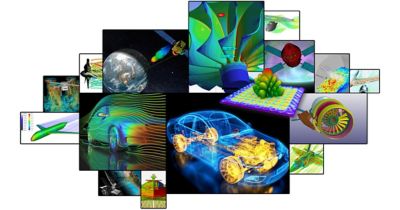-
United States -
United Kingdom -
India -
France -
Deutschland -
Italia -
日本 -
대한민국 -
中国 -
台灣
-
Ansys s'engage à préparer les étudiants d'aujourd'hui à la réussite, en leur fournissant gratuitement un logiciel de simulation.
-
Ansys s'engage à préparer les étudiants d'aujourd'hui à la réussite, en leur fournissant gratuitement un logiciel de simulation.
-
Ansys s'engage à préparer les étudiants d'aujourd'hui à la réussite, en leur fournissant gratuitement un logiciel de simulation.
-
Contactez-nous -
Carrières -
Étudiants et universitaires -
-
S'inscrire -
Déconnexion -
Espace client -
Support -
Communautés partenaires -
Contacter le service commercial
Pour les États-Unis et le Canada
+1 844.462.6797
-

While simulation has proven to help companies develop better products faster and more efficiently, it also produces copious amounts of data. Simulation process data management (SPDM) solutions further accelerate and improve the approach to product development and serve as the cornerstone for implementing and optimizing the digital thread in modern product development.
Ansys subject matter experts Jeff Bernier, global sales director of new and emerging technologies, and Tom Marnik, senior business development executive, sat down with industry leaders from CIMdata, Aras, VCollab, and Inensia to discuss how SPDM can drive digital transformation.

Sandeep Natu, CIMdata
- With more than 25 years of industry experience, Natu has a strong background in multiphysics-based modeling and simulation technologies, including the development and application of hybrid digital twins. Natu started his career using Ansys Fluent fluid simulation software and has been associated with several engineering consultancy simulation software organizations. He has worked with many industrial organizations in helping them adopt simulation technologies and has deep application expertise in the automotive, aerospace, chemical, pharmaceutical, food, consumer products, and healthcare sectors. More recently, he has been involved in multiple technology and management consulting roles encompassing digitalization, simulation, sustainability, and business management.
Matteo Nicolich, Aras
- Nicolich is an experienced product manager with a background in mechanical engineering and aeronautics. He has deep experience in optimization, analytic decision making, and computer-aided engineering (CAE) process automation and data management. He actively collaborates with multiple working groups as part of NAFEMS, INCOSE, and ProSTEP iViP associations to create the connections between simulation and product design process and foster the adoption of simulation-driven design practices. Nicolich joined Aras in 2019 and is now director of product management, covering multiple areas of Aras Innovator platform and applications. He is also in charge of the internal Agile Product Exploration Initiative to drive customer-validated solutions.


Prasad Mandava, VCollab
- Mandava is the co-founder and CEO of VCollab, a pioneering company transforming how manufacturers leverage CAE data. With more than 25 years of experience, Mandava has driven innovation in the simulation industry, enhancing VCollab's platform and establishing global partnerships. Before VCollab, he spent 15 years in aerospace, leading projects in computer-aided design (CAD), CAE, and virtual reality. He is a recipient of the prestigious Sir C.V. Raman Award for his contributions to computer science and serves on several advisory boards.
Hernán Giagnorio, Inensia
- Giagnorio is a managing director at Inensia, where he leads initiatives in SPDM practice and partnership with Ansys. With a robust background in engineering and technology, he is recognized as an expert in SPDM, contributing significantly to the field. Giagnorio has shared his knowledge and insights as a presenter at NAFEMS congresses, highlighting his commitment to advancing industry standards and practices.

What advancements do you see in SPDM that will shape engineering and manufacturing over the next decade? What trends and innovations are you seeing today?
Mandava: I think the business value for this is the industry wants to launch the products quickly. How do you launch your products quickly? You have only so many resources in the company. Now they have to do more. A company made the presumption that computing is cheap. So, instead of doing 100 analyses, we can do 10,000 analyses. So, you're producing more data. Simulation is becoming a big data problem. How do you manage this data? How do you manage these processes? I think they need to think beyond the current tools of preprocessors, solutions, and post-processors. They need to think about the new class of tools, and SPDM certainly falls into that.
So, as simulation becomes more and more critical, again, as I say, I don't think industries can live without it because it brings the data-driven approach — a central depository, ability to audit, ability to preserve, the ability to democratize.
How do you see the role of SPDM in digital transformation, and why is that important?
Natu: When we look at how SPDM contributes to digital transformation, I believe the merit is no different than the basic argument for simulation itself. Simulation has, over the last two, two-and-a-half decades, essentially provided return on investment (ROI) by reducing the number of prototypes, ensuring that the products are launched on or before time, and ensuring that the overall cost of product development initiatives are reduced.
SPDM is the next evolution of that. As simulation becomes more and more entrenched in ideation, design performance validation, as well as operation, you have to have a backup data and process management system in place to ensure that the organization's intellectual property is stored and reused appropriately.
How does SPDM complement product life cycle management (PLM), and what is the added value and advantages?
Giagnorio: This is the first question that we normally get from the IT department. Every single time that we start an SPDM project, the question is, why do we need an SPDM system if we already have PLM, and we can store simulation data within the PLM system? The fact is that the PLM system can store complete simulation data, but it's the same with Google Drive. You can always have a SharePoint or a repository where you can store simulation data.
The real added value of SPDM over the PLM is the ability to ensure data flow within multiple inputs and outputs, so things like requirements, CAD, and test results, and also the possibility to launch and visualize simulation data. Here, I think we are aligned with a data center. So SPDM provides an edge by complementing the PLM system. So you enable a proper digital thread, data gathering, and, of course, visualization and process management.
What are some examples of how SPDM can improve collaboration across teams and streamline workflows?
Giagnorio: The ability to have a centralized repository will ensure that everybody has access to the latest revisions. And you can also define role-based access, which means that data can be shared in a controlled manner. So, no more and no less than what is needed.
At the process level, I would say the possibility to know the status and to visualize the results before they are published is a very powerful way of reducing the development cycle. Personally, I do remember needing managers to sign reports, print them, and give them to me to see what is happening in that simulation and to provide recommendations for improvements. I believe that an SPDM solution will go a long way to share data as it's being built.
How does SPDM empower teams to make more informed data-driven decisions?
Natu: The bigger point that I want to make here is particularly about creation and management of AI models. As all of us are aware, we are at the very early stage of this entire AI revolution. Given that, it is important that we have a robust data and information framework that supports these initiatives over the years. None of these models are final models or final algorithms that users are going to consume. It is going to be a huge amount of evolution they are going to undergo. There is going to be a good amount of governance that is going to require. There has to be a place to keep them, look at their own life cycle, and ensure that their integrity is in place before they are implemented in the industry.
So, both essentially the framework for creating these models, which is essentially the data and process management framework, and then the life cycle of the model management in terms of creation of the model, managing the models, and evolution of the model itself.
What strategies can companies implement to ensure maximum ROI on their simulation investments?
Nicolich: It starts with the base. Instead of focusing on very advanced isolated groups with advanced needs and requirements, you need a common base for all the data for simulation that is for every simulation engineer, every department in your company that may have different level of maturity.
To hear the full discussion, watch the webinar “SPDM Panel Discussion: A Foundation to Enable the Enterprise Digital Thread.”
Just for you. We have some additional resources you may enjoy.
Learn More
Watch the webinar “SPDM Panel Discussion: A Foundation to Enable the Enterprise Digital Thread.”
The Advantage Blog
The Ansys Advantage blog, featuring contributions from Ansys and other technology experts, keeps you updated on how Ansys simulation is powering innovation that drives human advancement.













